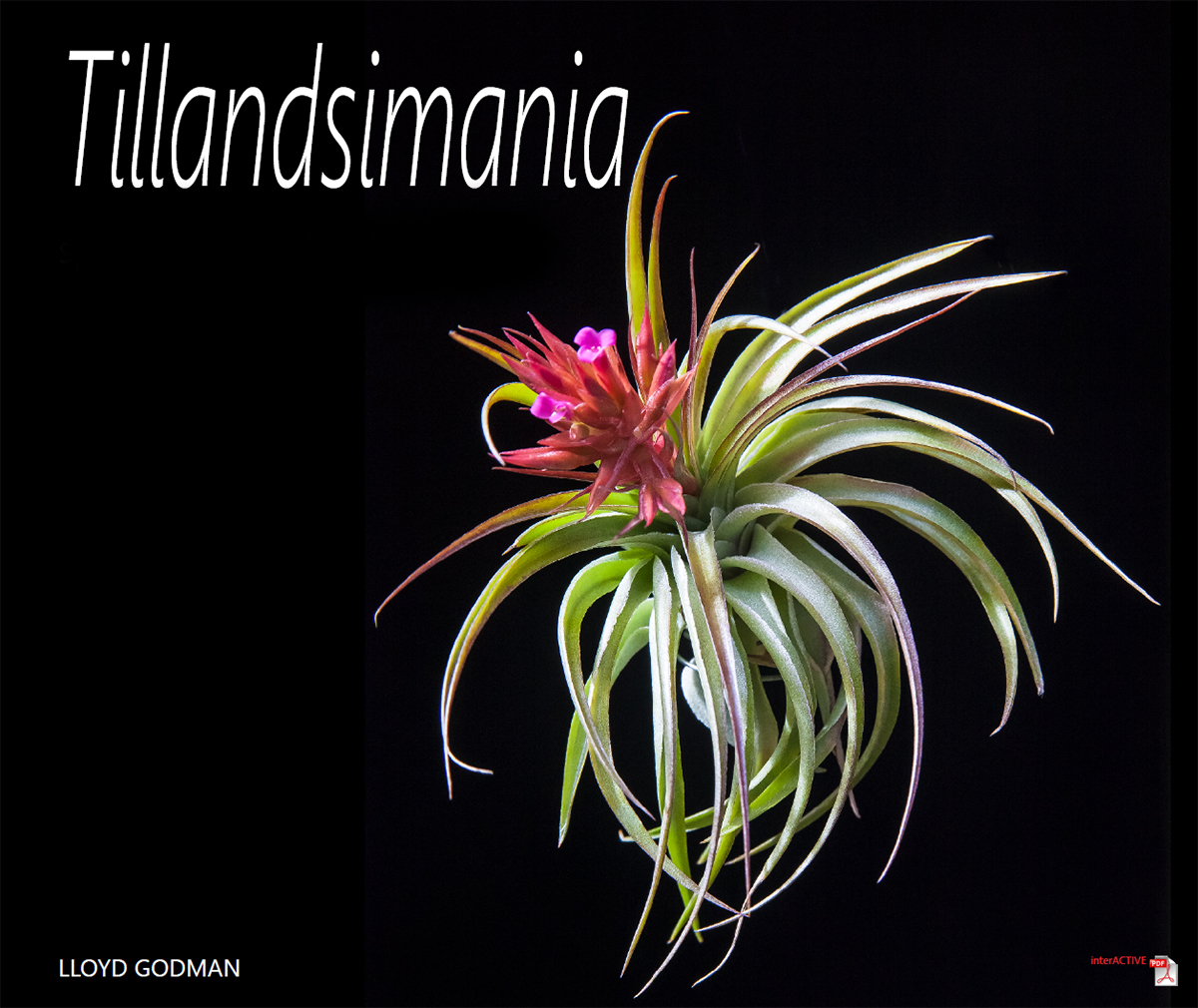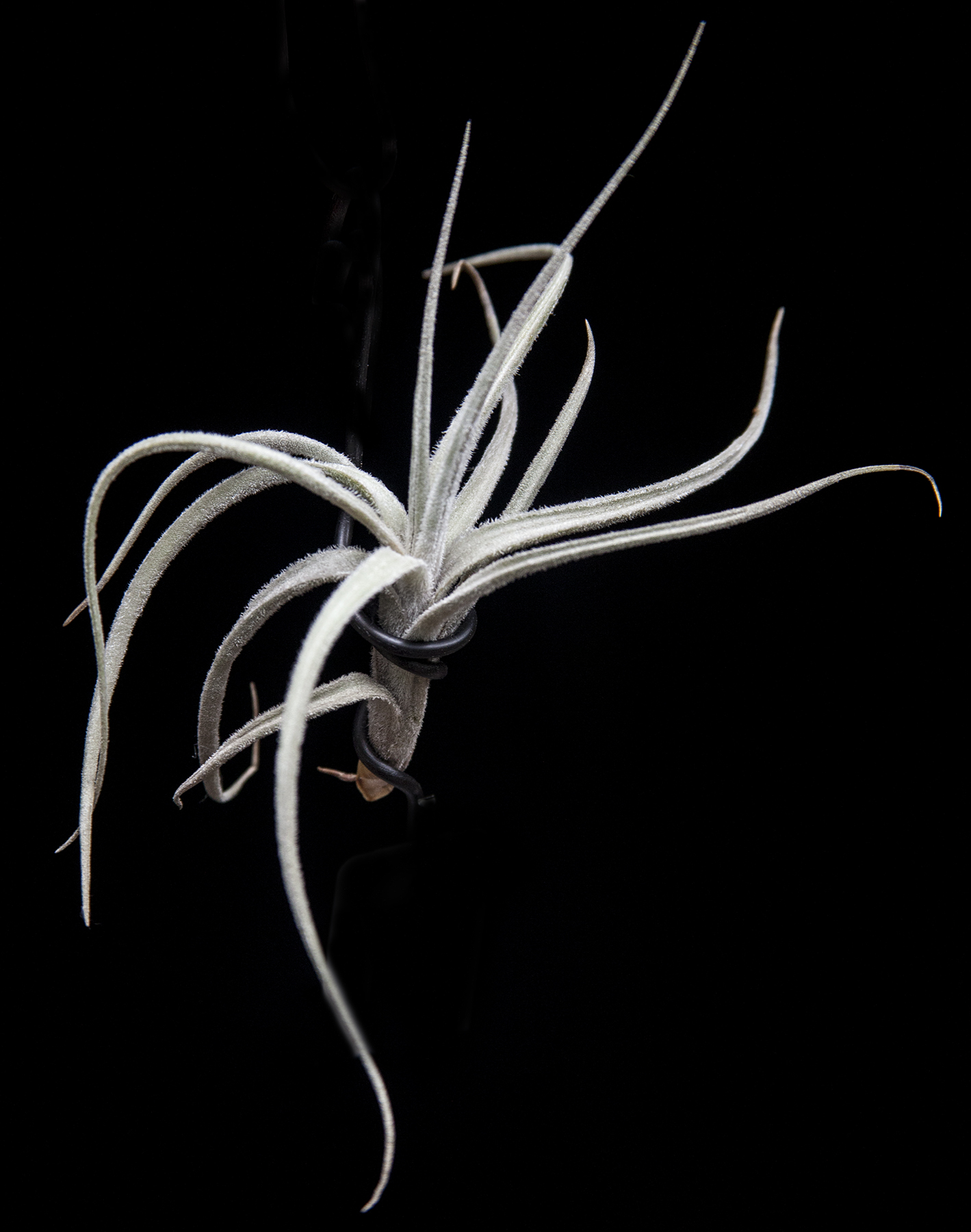A
catalogue of Bromeliads used for various projects by - Lloyd Godman
This
is a catalogue of bromeliads used by Lloyd godman for his various installations
and photosynthesis projects - the collection of pants he accessed in
New Zealand from 1996 - 2004 was collected from a wide range of sources,
while most were brought from Greens Bromeliads, some were also donated
by the Dunedin Botanical Gardens. Later in 2004 these plants were either
sold or given away with his move to Australia.
Lloyd is at present re-establishing his collection where he now lives
in Melbourne.
A
Lexicon of Bromeliads: A
resource by Lloyd Godman
Genus - Tillandsia: Sub-Family - Tillandsioideae: Family - Bromeliad
Tillandsias
are regarded as true air plants and as such are among the most unusual
of the Bromeliad family. They range from bulbous forms and grass like
structures to silver tufted masses. Typically they grow where there
is free air movement like high treetop environments or across open rock
faces, and often they are heavily covered in silver trichomes that help
reflect the high levels of sun light they receive in these locations.
While some tolerate temperatures as low as 5 degrees C (40 degrees F),
or even lower, most prefer temperatures of around 10-32 degrees C (50-32
degrees F). While they require high levels of humidity, they need to
dry out quickly and completely between misting or watering. As the trichome
scales open to absorb moisture and close to retain it, it is important
that the plants are given time to dry out and most plant deaths occur
because of over watering.
Tillandsimania - is an interactive PDF and a work in progress which is updated annually for more information - Tillandsia – air plant E book
$32 Australian including P&P To purchase a DVD
email lloydgodman at gmail.com
|

|
Tillandsia cardenasii |
|

.
|
Family: Bromeliad
Sub-Family: Tillandsioideae:
Genus: Tillandsia
Native distribution and habitat: Native to Bolivia - departments of Potosi, Cochabamba and Chuquisac - and grows on rocks and cliffs, in the Bolivian
Andean dry valleys from 1,700 to 3,400 m.
Growth habit: Over time the plant can form dense clumps
Foliage: The soft curving, channelled leaves have a heavy coating of trichomes which give the plant a silver white appearance.
Flowers:
Seed: It is a trochilophilous species (i.e., pollinated by hummingbirds) (Kessler
2002)
Pups:
Cultivation:
Availability: A rating of Near threatened is given to this species due to its high
habitat specificity, the lack of habitat protection within its range and the high
level of threats
|
|